Exclusive event for Lassonde Mineral Engineering students:
Fireside chat with Ross Lawrence (GeoE 5T6), recently inducted into the Canadian Mining Hall of Fame
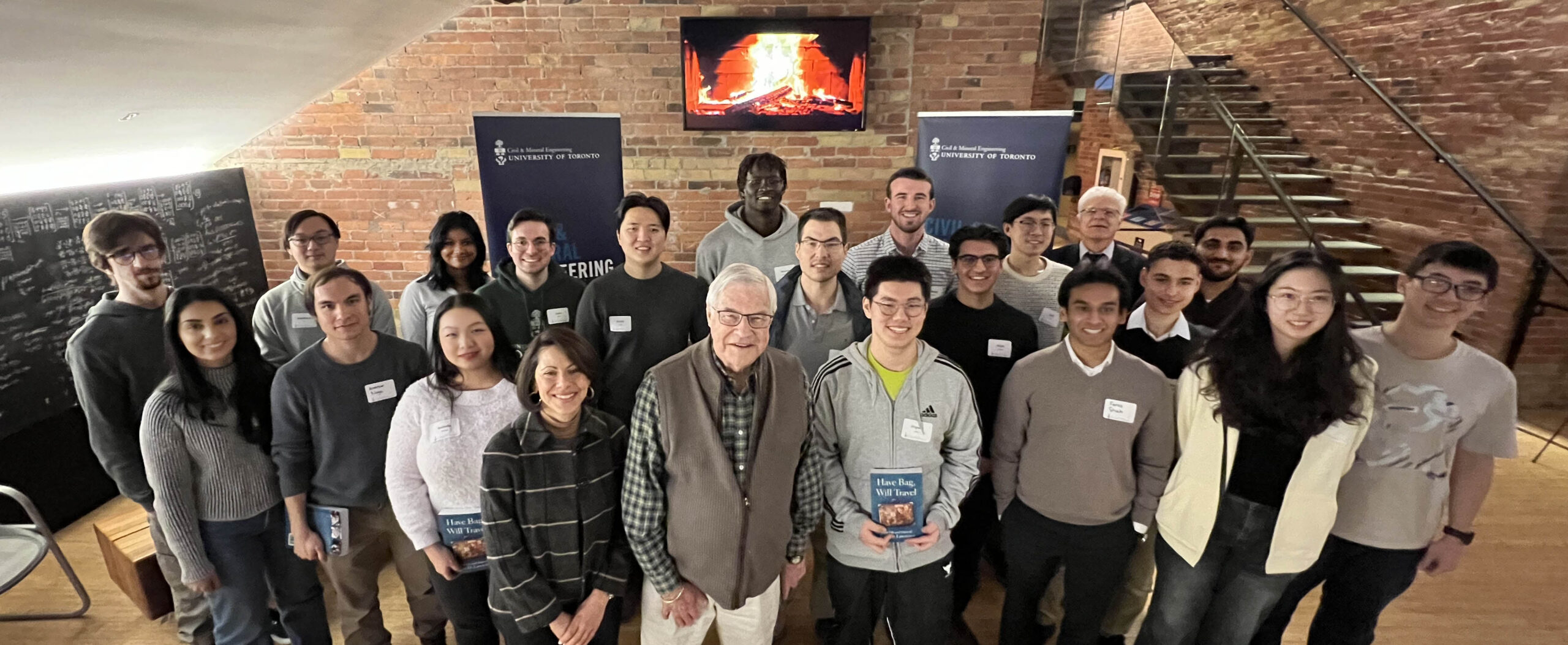
The Department had the pleasure of holding a unique event with alumnus Ross Lawrence (GeoE 5T6), who was recently inducted into the Canadian Mining Hall of Fame.

He graciously agreed to share his career and life experiences with us during an intimate “fireside chat” on Wednesday, January 17. This exclusive event for our Min students, supported by Engineering Advancement, included a light fare reception following the talk.
After a welcome from CivMin Chair Professor Marianne Hatzopoulou, along with insightful perspective on the impact of mining on Indigenous communities at home and abroad, the talk was moderated by Professor John Harrison.
Lawrence’s career, spanning decades, included consulting on mining projects around the world. As a founding partner of Watts, Griffis, and McOuat Limited (WGM) in 1962, his career saw work in more than 100 countries, and established offices in Australia, England, Alaska, Saudi Arabia, Yemen, Iran, and Indonesia.
Of his notable technical contributions, was the introduction of a method for diamond drilling 12-inch diameter core. It allowed for bulk sampling, which had previously not been possible.
Lawrence and his fellow classmates led a fundraising campaign to establish the Class of 5T6 Engineering Award of Merit, for outstanding engineering students at U of T. He also championed Mining Matters, devoted to educating students and the public about the impact of the mining industry for Canada.
As a historical frame of reference, Lawrence emphasized how the little town of Cobalt, Ont. led the way to make it possible for Canada to take the world stage in mining. The hard rock mine saw the Cobalt Silver rush begin in 1903, when huge veins of silver were discovered, eventually leading to the Cobalt area mines producing some 460 million ounces of silver. It was this influx of capital which directly led to the funding of so many of the major Canadian mining projects which followed. Lawrence also provided attendees with the bonus of signed copies of his book, Have Bag, Will Travel.
2023 Top 25 Environmentalists Under 25 Winner
Yazan Zamel (EngSci 2T2 + PEY, CivE MASc candidate) has been selected as one of Canada’s Top 25 Environmentalists under 25.  “I am absolutely thrilled to be named as Canada’s Top 25 Environmentalists Under 25, a recognition that resonates with my dedication to leadership and sustainability, reflecting my passion towards driving positive change. This honour not only celebrates my individual accomplishments, but also reflects the critical importance of embracing sustainable practices. Receiving this recognition further fuels my determination to contribute to a more sustainable future. My goal is to inspire other youth to make a meaningful impact in the field of energy efficiency and sustainability. I am excited about the journey ahead and the positive transformations we can collectively achieve!”Zamel is currently serving as the President of the Sustainable Engineers Association at U of T (Instagram: @seauoft) and is an MASc candidate in the Building Energy and Indoor Environment (BEIE) lab under the supervision of Professor Marianne Touchie.
“I am absolutely thrilled to be named as Canada’s Top 25 Environmentalists Under 25, a recognition that resonates with my dedication to leadership and sustainability, reflecting my passion towards driving positive change. This honour not only celebrates my individual accomplishments, but also reflects the critical importance of embracing sustainable practices. Receiving this recognition further fuels my determination to contribute to a more sustainable future. My goal is to inspire other youth to make a meaningful impact in the field of energy efficiency and sustainability. I am excited about the journey ahead and the positive transformations we can collectively achieve!”Zamel is currently serving as the President of the Sustainable Engineers Association at U of T (Instagram: @seauoft) and is an MASc candidate in the Building Energy and Indoor Environment (BEIE) lab under the supervision of Professor Marianne Touchie.
Meet our MEngCEM alumna Alexandra Labuda. We chatted about her journey at the program, her passion for urban planning, her career path and her future goals.
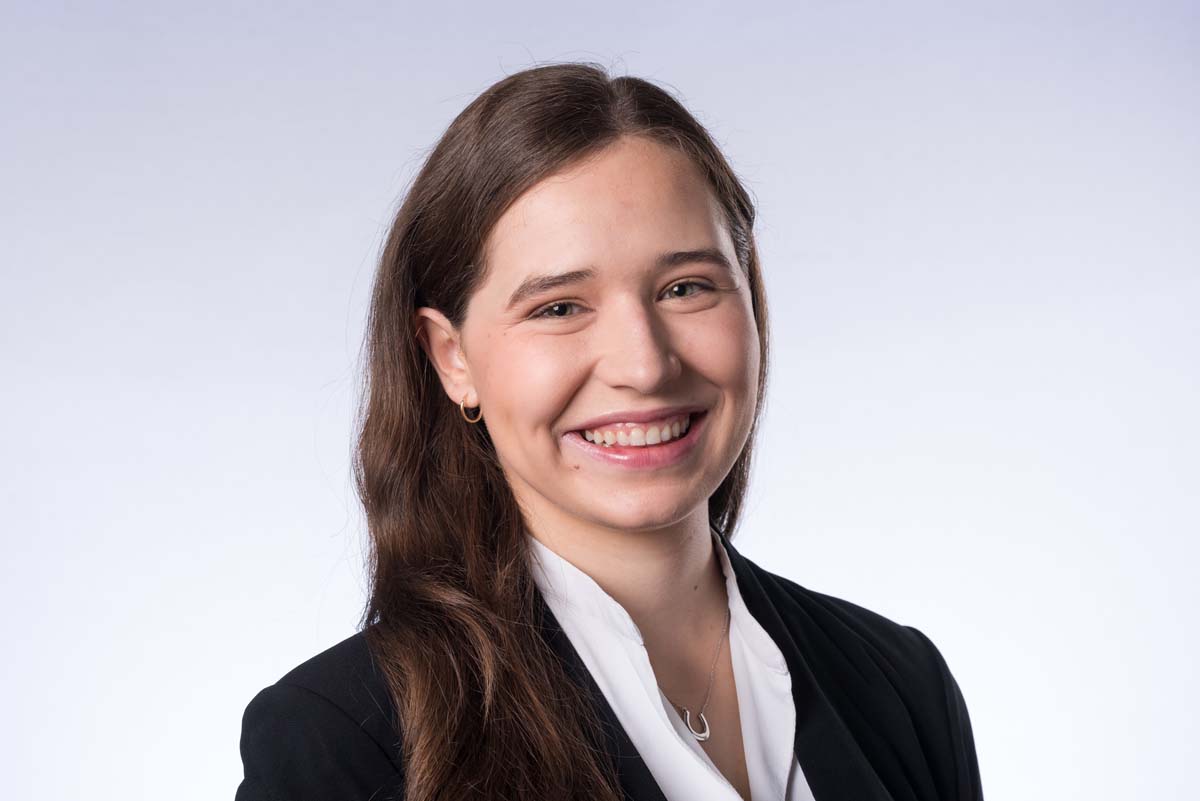
Could you introduce yourself please.
My name is Alexandra Labuda, I’m a 2023 graduate of the Master of Engineering in Cities Engineering and Management (MEngCEM) program.
What were your courses (emphasis)?
I specialized in Critical Infrastructure Resilience.
Do you recall any projects/assignments completed in your program/emphasis, which helped you build your portfolio or helped you during the interviewing process?
In my Infrastructure Resilience Planning (APS1024) course, I worked in a team to develop a Resilience Strategy for a local government client. The strategy communicated how to reduce vulnerability to hazards identified as posing the greatest risk to critical infrastructure. This project helped me expand my portfolio, demonstrate my understanding of resilience planning, and apply it to a real-life problem. The lessons I learned through this project remain relevant and transferable to many other communities facing the mounting effects of climate change and have a desire to better plan for operational resiliency.
Why did you decide to pursue an MEng degree at U of T?
Pursuing an MEng degree at the University of Toronto was a strategic decision to complement my urban planning background and enhance my understanding of urban issues through an engineering lens. I felt the MEngCEM program would equip me with the technical engineering knowledge needed to implement the physical infrastructure of cities and understand complex urban systems. Additionally, given the interdisciplinary nature of city planning, I was confident that a combination of engineering and planning expertise would help me incorporate principles of both professions in my work to better address multifaceted urban challenges. U of T’s recognition on a global stage and reputation for teaching excellence further cemented my decision to pursue the MEngCEM program.
What was your favourite study spot on campus?
My favourite study spot on campus was the University College Library. It’s book-lined alcoves and beautiful stained-glass windows provided a certain calmness that aided my focus and creativity! The Eberhard Zeidler Library in the John H. Daniels Faculty of Architecture, Landscape and Design is a close second with its modern yet cozy ambiance.
How did your practicum go?
During my practicum, I returned to my former employer Urban Systems Ltd. Urban Systems is a multidisciplinary professional consulting firm based in western Canada. During my practicum, I was responsible for supporting the delivery of a wide range of projects and other specialized studies for local government clients (land use inventories and strategic plans, growth and redevelopment strategies, infill housing studies, stormwater management studies, housing needs assessments etc.). My practicum experience illuminated and reinforced many of the academic concepts I learned in the MEngCEM program.
Are you still working with them?
I currently hold the position of Community Planner with Urban Systems. I provide professional advice to local government clients and Indigenous Communities on addressing growth and development opportunities and challenges, from both urban planning and engineering perspective. I find my work very rewarding and Urban System’s commitment to building sustainable and socially responsible communities strongly align with my personal values and desire to have a positive impact and add value to my own community.
How did the knowledge gained in the Program help you in your career?
The knowledge I gained in the MEngCEM program has helped me to become a systems thinker, apply data science to urban problems, and be more critical of urban policymaking. All these skills have benefited me in my work by helping me to more effectively deliver plans, bylaws, and policies that reflect the unique needs of communities. Specifically, my enhanced understanding of infrastructure resilience and protection, urban prosperity, data analytics and urban policy-making has helped me to develop personalized solutions for local governments experiencing challenges with infrastructure capacity, housing affordability, and community completeness.
What are your plans for the future career/academic-wise?
I am determined to continue developing my engineering and management skills and further grow in my professional competency as a Community Planner. I’m also excited at the prospect of mentoring and sharing my knowledge with new co-op students and those early in their professional planning and engineering careers.
Any suggestion for future MEngCEM students?
I highly encourage future MEngCEM students to explore new and interesting subject areas in the program and step outside their comfort zone. While doing so, it’s important to have a strong support network whether that be your peers, professors, mentors, or friends. Lastly, I highly recommend students attend the CivMin Career Fair which takes place every January to network and connect with others in your professional field.
Can we get an inspiring quote from you in closing?
Hard work is the bridge between where you are and where you want to be.
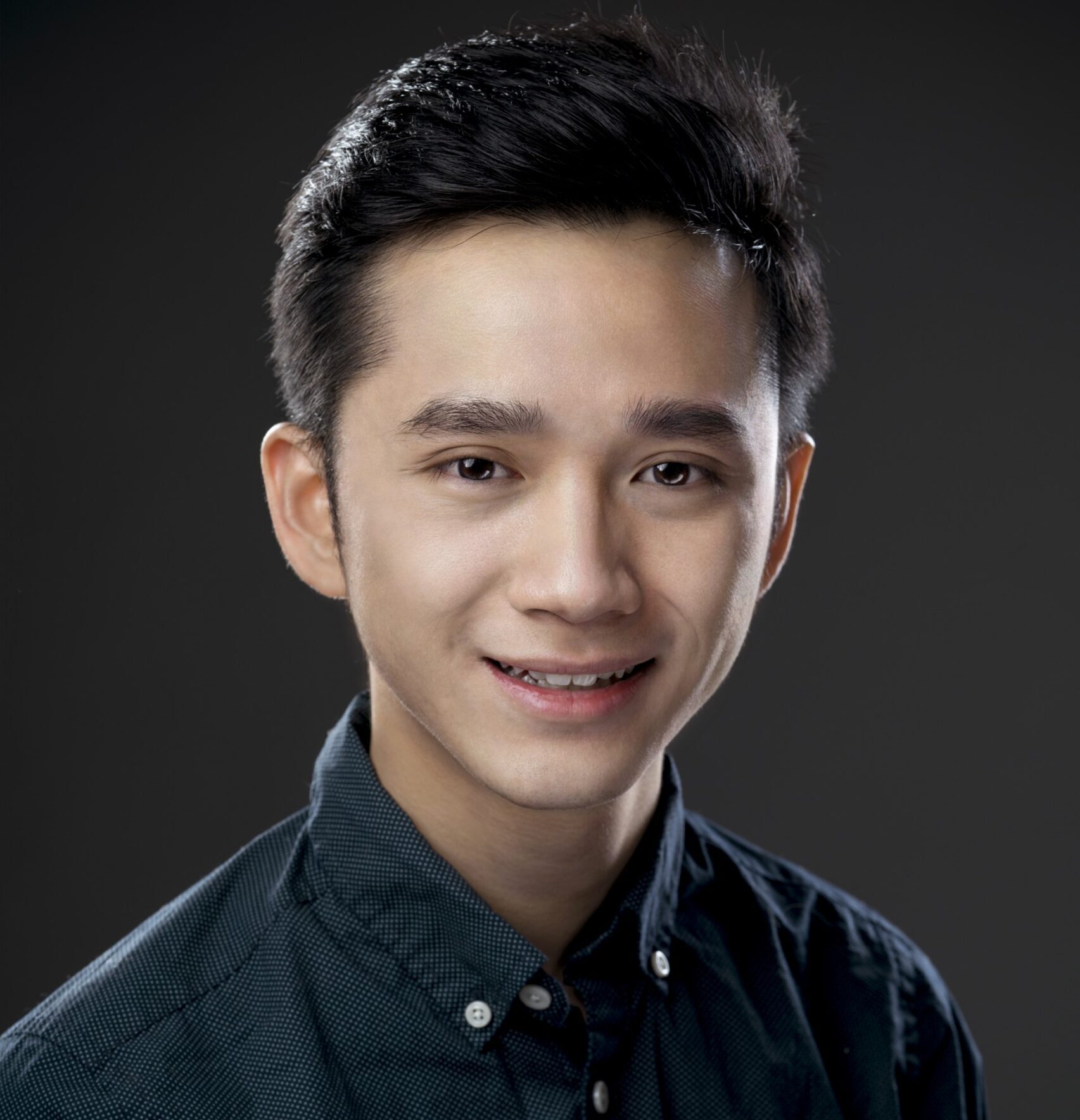
Could you introduce yourself please.
My name is Evan Wong, and I am a recent graduate of the Master of Engineering in Cities Engineering and Management (M.EngCEM) program.
What were your courses (emphasis)?
Among the six emphases offered in the program, my emphasis is ‘Resilience in Critical Infrastructure’, with a curriculum that consists of a wide spectrum of courses including strategic planning, risk management, machine learning, data analytics, policy-making, real estate development, land use, urban sustainability, project management, infrastructure engineering, and economics.
Do you recall any projects/assignments completed in your program/emphasis, which helped you build your portfolio or helped you during the interviewing process?
Reflecting my experience and academic journey at the University of Toronto, all the projects and assignments in the curriculum have played a role in assisting me with building my portfolio from industry to industry, in the short duration of eight months. I was exposed and trained with an extensive range of skillsets and domain knowledge, which are all applicable and very relevant in assisting me in diverging my endeavors towards real estate development.
Why did you decide to pursue an MEng degree at U of T?
Having practiced as an architect, after I have obtained my Master of Architecture degree, I recognized the powerful impact that our built environment places on our economies, social developments and well-being. The M.EngCEM program is a very unique platform that focuses on infrastructure engineering, policy making, urban sustainability and risk management, which are great complementary domain knowledge, skillsets and expertise to my architectural and urban planning background. And, therefore, shortly after I have become a licensed architect in the US, I have decided to join our M.EngCEM cohort in addressing the challenges facing our world as a collective, including rapid urban expansion, global population growth and climate change.
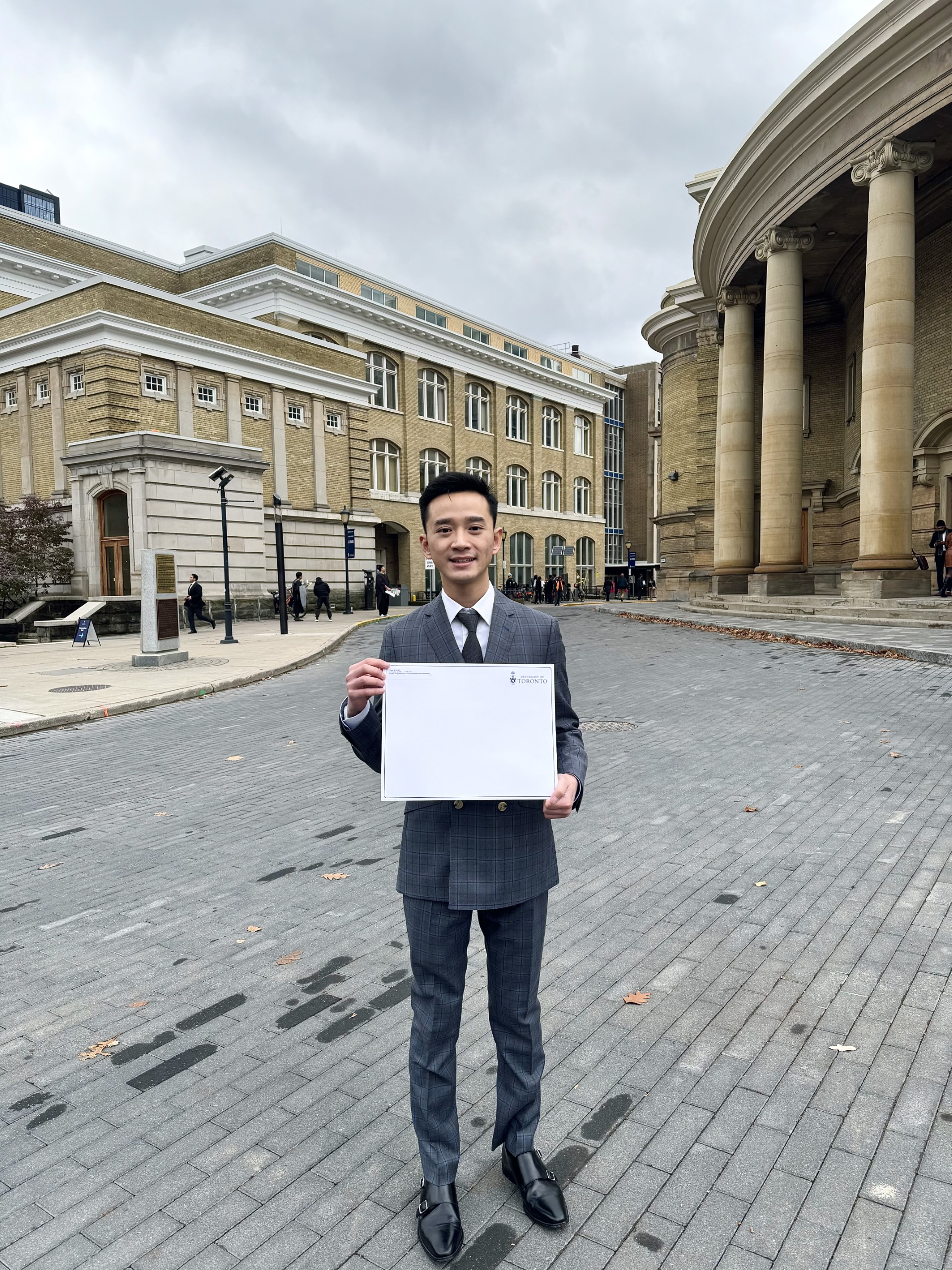
As an international student, how was your experience moving to Toronto? Any suggestions for future students?
My time living and studying in Toronto has been exciting. The campus locates at the heart of the city with a wide range of architecture – the distinct seasons also add another layer of charm to it. I have lived in many cities and a few countries in the past, and I would say that the vibrant arts and food scenes in Toronto are very rare—definitely worth a couple weekends off to explore and to enjoy all the city has to offer! Also if you have time during the week, you will find many surprises by taking a stroll in a beautiful afternoon along the waterfront, especially the plane spotting (the Bishop Airport is just across the water)!
What was your favourite study spot on campus?
My favorite locations to study were the Gerstein library at the Life Sciences Department, and the Eberhard Zeidler Library at the Daniels Faculty. I hope you will fall in love with the unique architecture at these locations as well!
How did your practicum go?
I spent my practicum term with Dream, which is a leading real estate development company with $23 billion AUM in Canada, United States and Europe. Working as a member in both the ‘horizontal’ and ‘vertical’ teams, I was very fortunate to be able to participate in a wide spectrum of tasks, projects and events that have provided me the very comprehensive exposure and experience in real estate development. This practicum with Dream has also helped me to merge my domain knowledge from my technical background with the financial and project management components in development.
Are you still working with them?
Although my practicum term at Dream has come to an end, I am still working in the real estate development industry, as this experience has assisted me in determining that real estate development is the correct career path for me.
How did knowledge gained in the Program helped you during your practicum? Does it still benefit you in your job?
Apart from the skills developed from my previous work experience and educational background within architecture and urban planning, I have also been utilizing knowledge developed from the MEngCEM Program, including policy-making, analytical reports and risk management. Prior to joining the MEngCEM program, I noticed the ‘gap’ between my skillsets and the development aspect of the industry. MEngCEM has helped me to develop the knowledge and skills required to bridge the two ‘worlds’ and enabled me to enter the development aspect of the real estate industry.
What are your plans for your future career or academic goals?
My long term goals are to become a part of the broader effort in building resilient and sustainable urban systems when addressing the challenges facing our world as a collective, as mentioned earlier, including rapid urban expansion, global population growth and climate change. And I believe that real estate development is a big part of the equation—also the reason I have taken the initiative to transition into the development sector of the industry.
Any suggestion(s) for future international MEng students?
Coming from a multicultural and multi-disciplinary background, I believe the well-rounded skillsets and domain knowledge integrated in the M.EngCEM program offer our candidates the rare opportunities to explore in many different industries. I would suggest our future candidates to keep an open mind and to not be afraid to experiment, especially given the unique combination of courses and the comprehensive curriculum.
Can we get an inspiring quote from you in closing?
Definitely ‘work hard; play hard’!
By Galina Nikitina
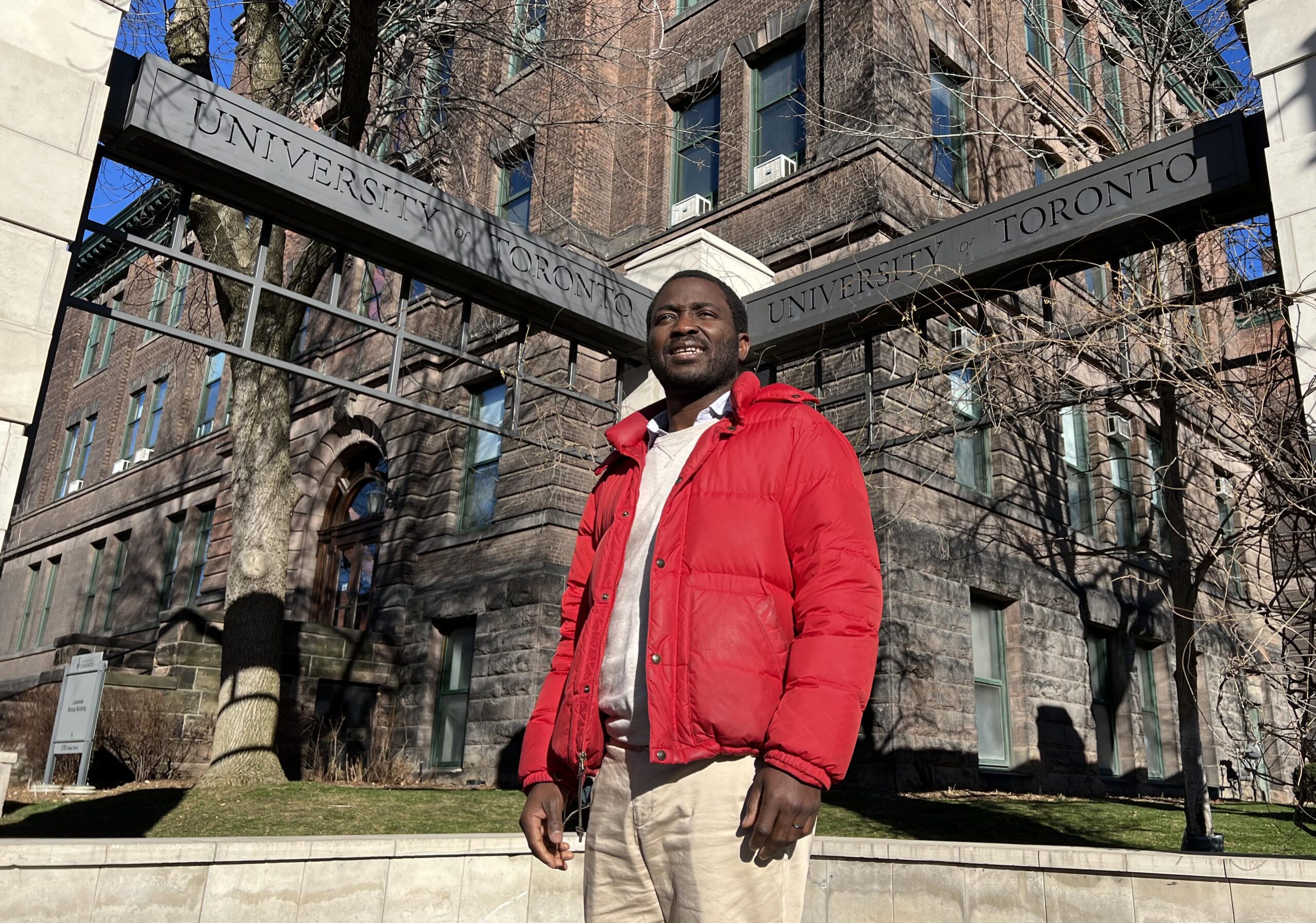
Professor Hamed Ibrahim joins the Department of Civil & Mineral Engineering as an Assistant Professor as of January 1, 2024.
CivMin spoke with Professor Ibrahim to learn more about his research direction, passion for teaching and what attracted him to Toronto. He has relocated from the U.S. to join our Department.
“We wholeheartedly welcome our newest faculty member to the Department,” says CivMin Chair Marianne Hatzopoulou offering her greetings. “Students will benefit from the exciting new elements Professor Ibrahim brings to the Department in teaching and research. Join us in offering our newest professor a warm welcome to CivMin.”
Q: Can you tell us a little about yourself as an introduction.
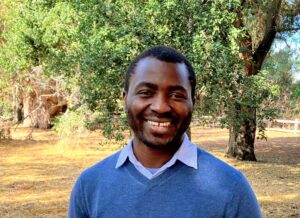
I was born in Lagos, Nigeria and spent my teenage years in the north central city of Lokoja, the confluence city where the Niger River meets its largest tributary, the Benue River. So, I have long had an interest in water and hydrology. After completing my secondary school studies in Ibadan, Nigeria, I moved to the U.S. where I completed my undergraduate and graduate studies and postdoctoral work.
Q: Could you explain the focus of your research?
My research is focused on understanding mechanisms of the hydrological cycle. I classify the temporal and geographical fluctuations of water and heat in this cycle in order to provide a scientific basis for regional water management and for adaptive design of built infrastructure in a changing climate.
Q: Why did you choose U of T?
I chose U of T for a few reasons: first, I have many family members who reside in Ontario and the northeast of the U.S., and proximity to them is important for me; second, Toronto is one of the most multicultural cities in the world and I am grateful to have the opportunity to add to, and learn from, the city’s diverse communities; third, U of T is a world-class institution where I can do groundbreaking and impactful work that will improve the world’s water condition.
Q: What are you most looking forward to in your new position?
I am looking forward to forming new partnerships and learning from students. The university is a fantastic place for exchanging and cross-pollinating ideas. Several of the threads in my career so far have resulted from chance encounters with people and ideas I followed up on. I am excited about this new opportunity.
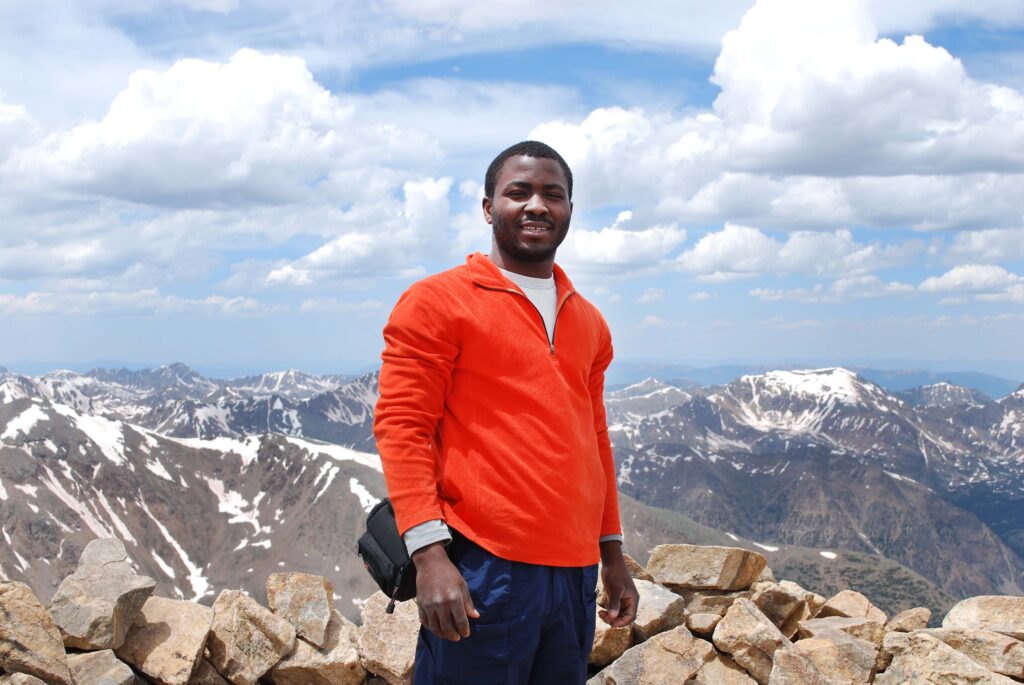
Q: As a new professor, what one piece of advice would you give to new students?
For most students, the period spent in the university is relatively short compared to their whole career. So, my one piece of advice is to embrace and take advantage of the brief opportunity to learn as much as possible while you are a student, which is a bit easier to do since the university has organized the different knowledge spheres: this organizing takes time to do after one leaves the university.
Q: What do you hope to accomplish in your new position/during your time at U of T Engineering?
I hope to tackle and find solutions to some of the world’s urgent water problems. Civilization primarily depends on exploiting water resources and avoiding water hazards. But these are challenging times regarding water resources: infrastructure is aging in many population centres, as is evident from recent dam failures and inadequate water supply, the global population is rising, cities are getting larger, and the global climate is changing with unknown consequences on regional water resources. My goal is to find adaptive solutions to urgent regional water problems and train the engineers and scientists who will continue this work in the coming century.
Q: What is the most memorable experience in your career so far?
Early in my PhD work, I developed a strategy to manage River Blindness, a vector-borne disease transmitted by blackflies. These flies like to breed in fast-flowing rivers and streams because their larvae feed by sifting moving water for food. I designed a micro-hydropower system to control blackfly population by diverting water, which decreases river flow velocity, to generate small amounts of electricity.
To show proof of this concept, I carried out a three-month research expedition to endemic remote farming villages in Tanzania in order to identify a suitable location to implement this control strategy. On each visit to a farming village, using a town hall meeting approach, I explained the purpose of my visit and the disease mechanism. I also described simple steps to reduce infection risk, such as wearing long sleeves and trousers and avoiding travel at sunset and sunrise when blackflies are more active.
After one such meeting, an individual walked up to thank me for visiting and for describing the disease mechanism, which will enable him to avoid blackfly bites and infection with the disease parasite. This was a significant moment in my own growth as an engineer and scientist. Until that moment I thought the micro-hydropower strategy was the only solution I could offer. I realized only then that the actionable information about the disease I provided to these communities is, in fact, a disease control strategy itself.
Q: Finally, is there anything fun/unusual/unexpected about yourself you’d like to share with our CivMin audience?
I like mountaineering and wilderness trekking in general. I have summited more than fifty of the tallest peaks in the conterminous U.S., so I am excited about the possibilities of exploring the Canadian outdoors.
~ CivMin

The Purolator Urban Quick Stop pilot project at U of T has received the 2023 ITE Toronto Project of the Year Award for an academic-industry-government partnership. The project involves swapping out large, gas-powered courier trucks for e-cargo tricycles in downtown Toronto hubs, as part of a "final mile" solution plan to reduce pollution for deliveries.
The award from the Institute for Transportation Engineers (ITE) Toronto Section saw Usman Ahmed, PhD (CivE PhD 2T2) and CivMin Professor Matthew Roorda accept the award on behalf of the Smart Freight Centre at the ITE Toronto Holiday Luncheon, held at York University on Thursday, December 14, 2023.

Dr. Ahmed, managing the research project from the U of T side, is a postdoctoral fellow. Prof. Roorda serves as Chair, Scientific Advisory Committee for the Smart Freight Centre (SFC), a collaborative research hub focused on improving the movement of goods across the Toronto Region. Launched in 2019 with support from the Dean’s Strategic Fund, the Smart Freight Centre includes members from several universities, as well as from government and industry. Within the SFC, the City Logistics for the Urban Economy (CLUE) group is a large funded project with 12 research sponsors and three universities; it has 24 subprojects with the e-cargo project as one of the projects.
Purolator replaced delivery trucks on the U of T St. George campus, and in neighbouring communities, with e-cargo tricycles operating from a microhub launched August 22, 2022,. This pilot project demonstrates the potential for e-cargo tricycle deliveries with potential expansion to other locations across Canada. It is built inside a standard 40-foot shipping container, fitting neatly into a parking space provided by the City of Toronto on St. George Street. It is the second Urban Quick Stop to open in Toronto, following an earlier installation on Spadina Road.

The endeavour has already demonstrated several benefits to society during its operation. First, researchers at U of T estimated a yearly reduction of about 2.7 to 3.4 tonnes of GHG and 7.8 to 9.8 kgs of NOx by replacing only one gasoline-powered truck. Second, it was found truck drivers were exposed to poorer air quality than the ambient air quality, which negatively affects driver’s health and is improved by using e-cargo tricycles. Third, using e-cargo tricycles eliminated truck conflicts and reduced the parking demand. Fourth, e-cargo tricycles have the potential to replace trucks without compromising operational efficiency. Fifth, the microhub, which also acts as a retail facility, is convenient for residents to drop off packages.
This award is given as a recognition for a significant achievement or contribution in the field of transportation engineering from the Toronto Section Area in the past year. The winning project adds to the state of the practice by demonstrating excellence and innovation in the field of Transportation. The ITE Toronto Section 2023 Project of the Year jury comprised six selected (volunteers) judges considered specialists in the field of Transportation that reviewed the nominated projects (submissions) and provided scores based on the evaluation criteria established by the ITE Toronto Section.
Find out more about this award on the CLUE (City Logistics for the Urban Economy) website.
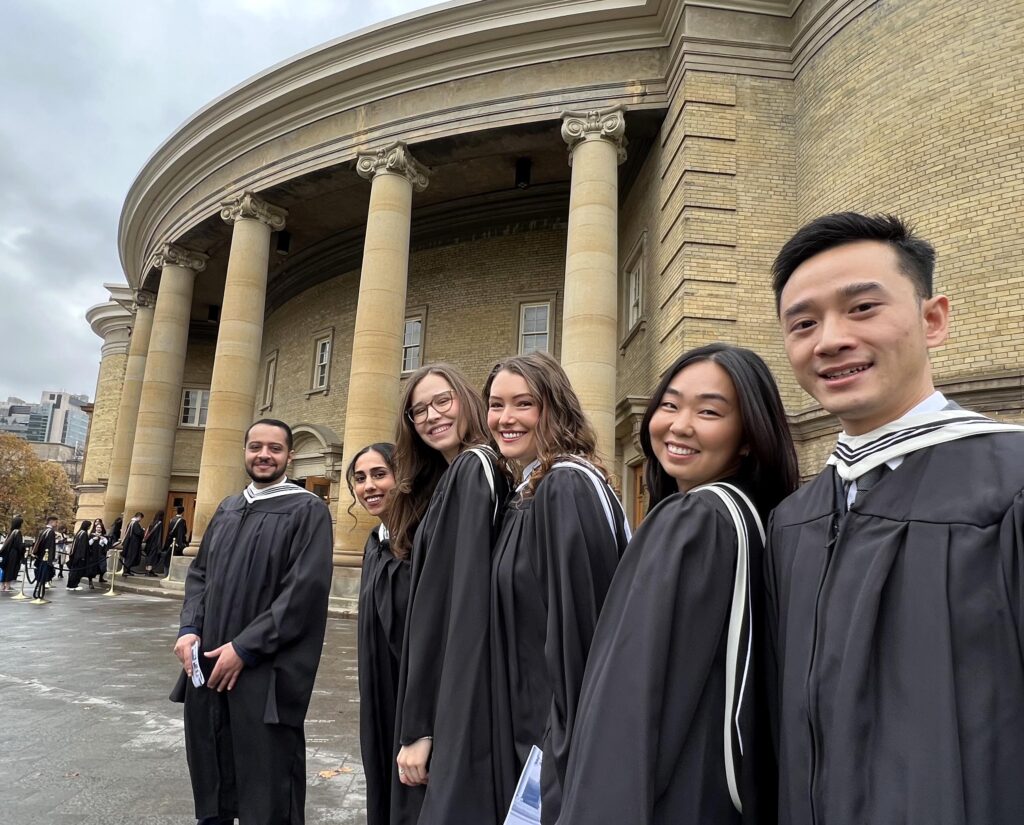
University of Toronto graduates are among the world’s most desirable in the eyes of employers, according to a new ranking by Times Higher Education.
U of T was ranked 12th in the world and the number-one public university in North America in the magazine’s graduate Global Employability University Ranking 2023-2024, which surveys top employers to determine which universities produce graduates with the skills necessary to succeed in the workforce.
The ranking evaluated 250 universities from 44 countries.
“The global demand for University of Toronto graduates reflects the quality of the students we attract and the education we provide,” said U of T President Meric Gertler.
“Our faculty and staff equip students with the knowledge, experience and outlook needed to excel in their careers, drive innovation in their respective fields and make a positive impact in the world.”
Designed by HR consultancy Emerging, the ranking is based on a survey of recruiters and managers from leading companies, most of which have a workforce exceeding 500 employees. This year’s results were based on 100,700 votes cast by 11,560 participants, each of whom can select up to 10 universities.
U of T has consistently ranked among the top 15 globally in the Times Higher Education employability ranking over the past decade, and it held the 11th spot last year.
This year’s edition of the ranking was led by the California Institute of Technology, the Massachusetts Institute of Technology and Stanford University.
Four Canadian universities joined U of T in the top 100: McGill University (31st), University of British Columbia (36th), Université de Montréal (72nd) and McMaster University (85th).
Overall, U of T is ranked first in Canada and among the top 25 universities globally in the five most closely watched international rankings: QS World University Rankings, U.S. News & World Report’s Best Global Universities, Times Higher Education’s World University Rankings, ShanghaiRanking Consultancy’s Academic Ranking of World Universities and National Taiwan University World University Rankings.
By Adina Bresge
This story originally posted by U of T News
Please go here find out more about our Graduate Programs in the Department of Civil & Mineral Engineering.
Meet our new MEngCEM alumna Jessica Dulku. We chatted about her journey at the program, her passion for sustainability and her future career goals.
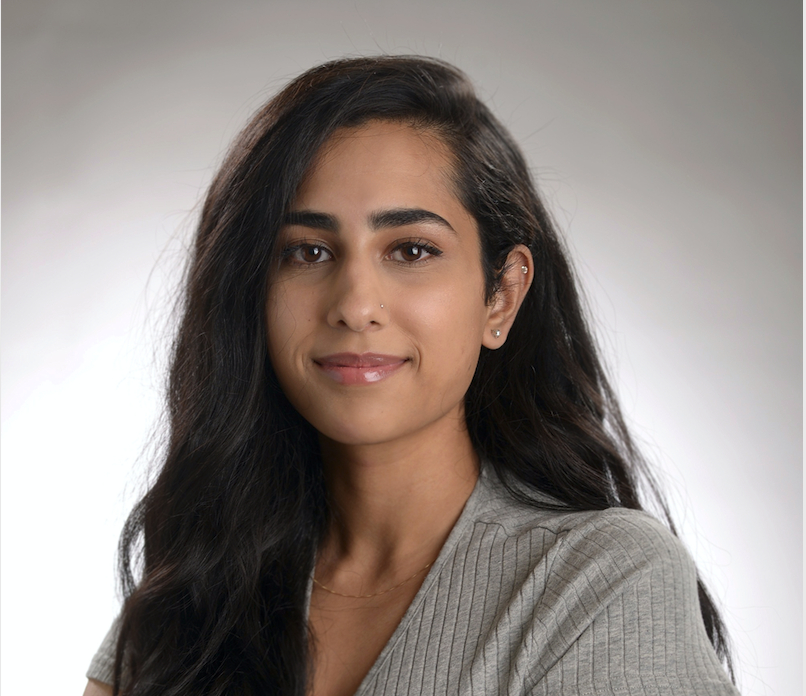
Could you introduce yourself please.
My name is Jessica Dulku and I graduated from the Master of Engineering in Cities Engineering and Management (MEngCEM) program in 2023.
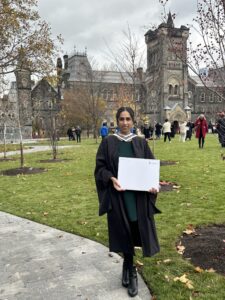
The CEM1002: Data Analytics and Cities had a large project that was split into sections throughout the semester. This project was very helpful in understanding data and how to extract important information. I found this to be an aspect many interviewers were looking for – being able to clean large, messy sets of data and make data visualizations that can be easily interpreted for presentations/reports.
The University of Toronto is known to have excellent engineering schools, with leaders specializing in the topics I am interested in, including sustainability, building science and renewable energy integration. I also found the MEngCEM program description to be unique as it included not only technical courses but also a focus on policy, data analysis, and theories in economics.
My favourite spot to study has to be sitting in the bamboo forest inside the Terrence Donnelly Centre for Cellular and Biomolecular Research. However, if I want a more quiet place to study, you would find me at the upper levels at the Bahen Centre.
I adopted a holistic approach as taught in the MEngCEM program, examining each project and linking it to current events and the challenges cities are facing.
Ride the waves of learning, go with the flow of curiosity, and let your journey take you to unique, extraordinary places.
